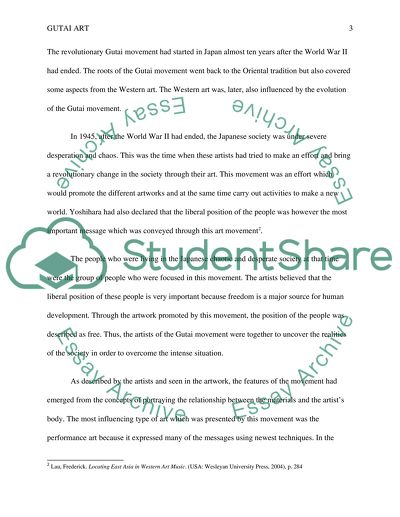Cite this document
(“Gutai art Research Paper Example | Topics and Well Written Essays - 3000 words”, n.d.)
Retrieved from https://studentshare.org/visual-arts-film-studies/1404508-gutai-art
Retrieved from https://studentshare.org/visual-arts-film-studies/1404508-gutai-art
(Gutai Art Research Paper Example | Topics and Well Written Essays - 3000 Words)
https://studentshare.org/visual-arts-film-studies/1404508-gutai-art.
https://studentshare.org/visual-arts-film-studies/1404508-gutai-art.
“Gutai Art Research Paper Example | Topics and Well Written Essays - 3000 Words”, n.d. https://studentshare.org/visual-arts-film-studies/1404508-gutai-art.


